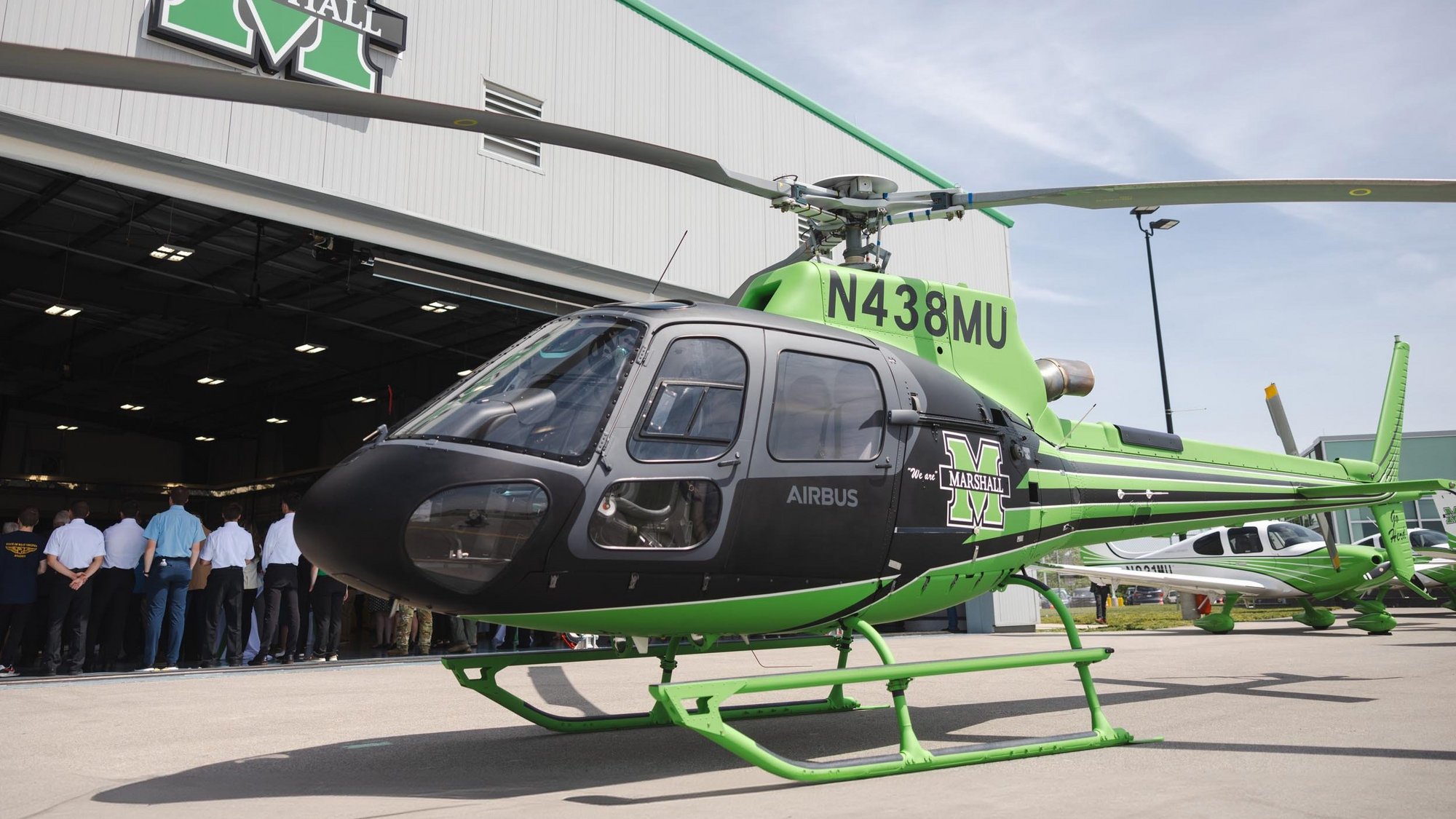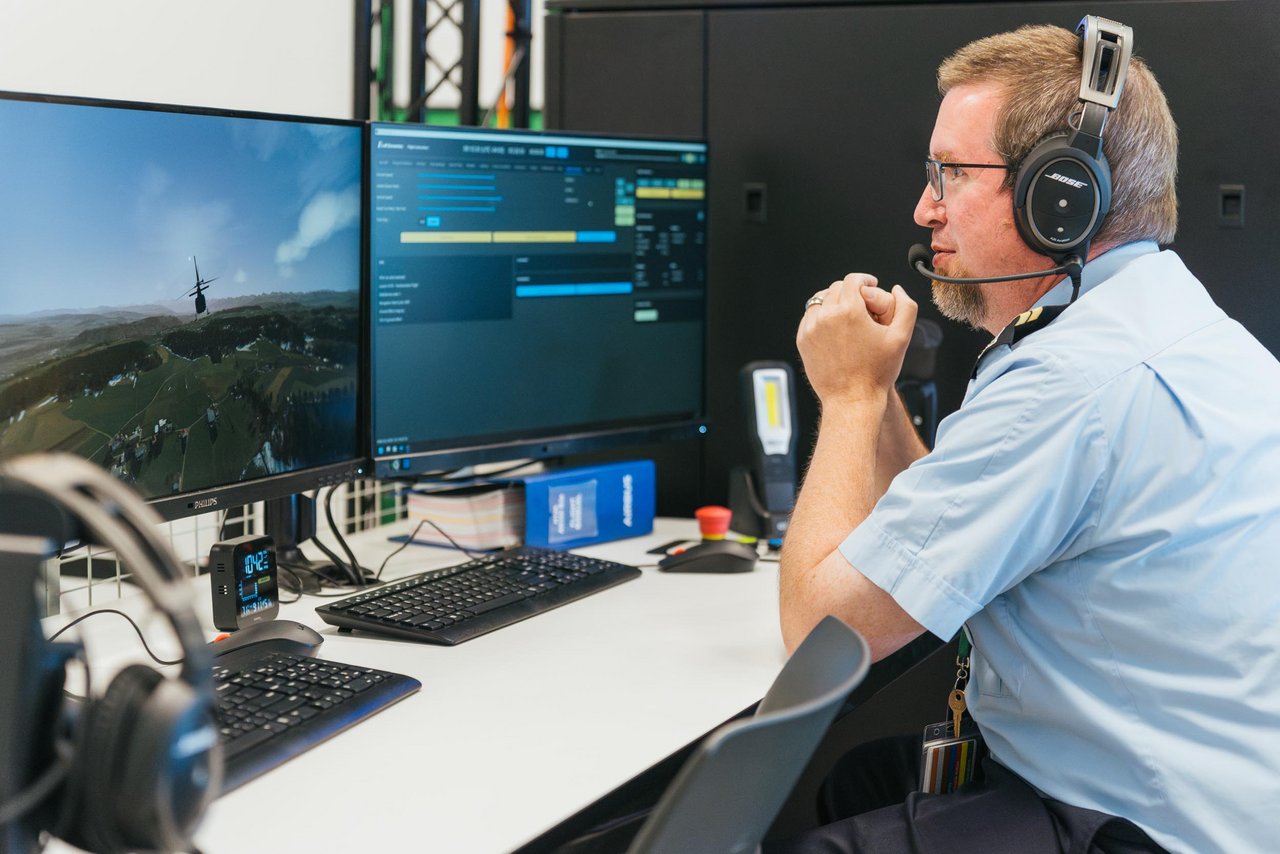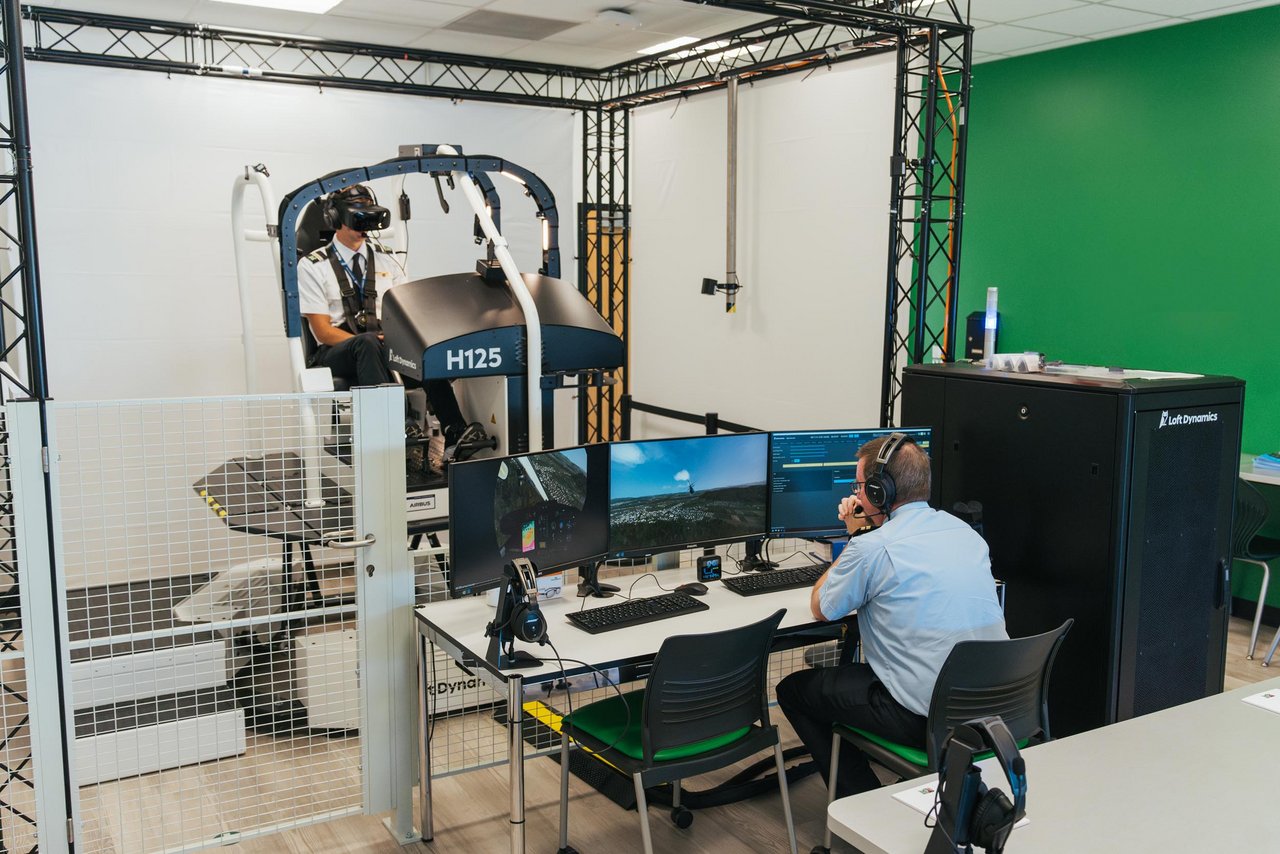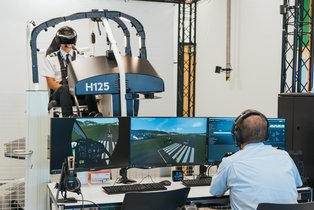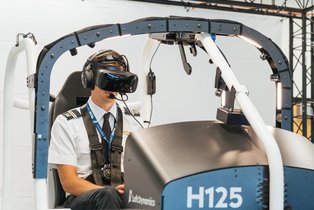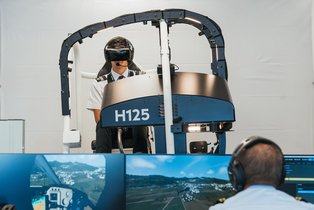Marshall University launches new helicopter pilot training program
Inside the Training Building, in a corner classroom a newly installed high-tech flight simulator stood ready for its first student. Its flashing lights signaled it was ready for action. As visitors streamed by it and stopped to watch, a sim technician sat at a table with three monitors, two of them showing vivid representations of the flight in progress and the third all of the parameters the technician could control to create a vivid flight experience.
The simulator replicates the AS350 and all of its flight characteristics, the motion base creating a nearly real flight experience and the Virtual Reality goggles a complete simulated world of flight for the pilot. Marshall University Helicopter Program Managers plan to use the sim to teach a curriculum of training tasks in coordination with major air medical helicopter companies and build a skill base for pilot candidates as they complete the course in a helicopter.
“We see the Marshall program as a manifestation of a program we’ve been working on for some time,” said Jason Quisling, Vice President of Flight Operations for Air Methods. Air Methods is the largest air medical company in the US, it’s staff of 1,400 pilots serving over 800 bases around the US providing 24-hour fast response to trauma scenes.
“We’ve worked on a number of projects to feed new pilots into our fleet,” said Quisling. “We have an advantage over airlines and jet charter companies in that our pilot recruits are not required to have Airline Transport ratings along with the 1,500 total flight hour minimum. So, we’re going to look at pilots with less flight time and construct a task-based training program for them. Completion of that training will qualify them to serve as an air medical pilot and conduct landings in remote terrain, use Night Vision Goggles and be skilled at managing marginal weather and avoiding Inadvertent Instrument Meteorological Conditions (IIMC).”
Quisling believes such a task-based program could facilitate recruiting pilots with less than 1.500 hours and empowering them to fly safely within the challenging environment air medical pilots face every day.
Treg Manning, Vice President of Sales for Airbus Helicopters US, also believes task-based training can support pilots with less than 1,500 hours flight time with the skills to successfully fly not only air medical but utility, offshore and public charter missions. “We see the Marshall University Helicopter program as the first of many that could reduce the pilot shortage crisis these companies are facing. And we intend to support Marshall University in designing such programs,” he said.
A key component in task-based training is a high-fidelity flight simulator. Pilot students can accomplish initial orientation and skill development in a simulator much more efficiently than in an actual aircraft. “We chose the Loft Dynamics H125 Flight Simulator Training Device (FSTD) as the perfect partner machine to Marshall University’s new AStar helicopter,” Manning said.
Confined area landings, night flying and avoiding flight into clouds are all basic skills every pilot learns. But air medical flying demands a higher level of awareness of the variables than that taught in basic commercial flight curriculums. “The flight school version of confined area landings, as an example, doesn’t equip a pilot to confront a landing zone in mountainous territory in the middle of the night,” said Jason Quisling. He explained that every night their pilots, on arriving at a remote trauma scene, must assess the terrain, obstacles and winds and quickly construct a strategy to make a safe landing and then, later a safe departure. These situations leave very little room for error amongst a host of challenges. Learning these challenges, and how to manage them in a simulator creates all the hazards a pilot will face while doing so, but in a safe environment. Then, when the pilot student demonstrates competency in the sim they graduate flying the same challenging landing zone in the helicopter, creating habit patterns that will keep them safe regardless of night or day, high winds and clouds or rough, rocky obstacles.
This same methodology is applied to night flying with NVG’s, avoiding weather in remote areas where there may no information on the conditions, and landings and takeoffs on rocky, uneven terrain.
Marshall U’s curriculum for this training starts with introductory sessions in the Loft Dynamics simulator. The students will first be given an in-depth presentation on each maneuver that will include typical scenarios when a pilot might need to employ it, the basics on quickly preparing for it, and then skills practice under varying conditions.
As an example for confined area landings, the preparatory material will include a re-statement of the basics learned early in the student’s training, then the development of tools to assess the landing situation and finally the application of confined area principles to safely conduct the landing and the departure.
“Our intent is build advanced mental and physical skills for each of the tasks we teach, building on the principles the student learned during his early pilot training,” said Bruce Ray, Program Manager and Lead Instructor for the Helicopter Training Program. “The power of the simulator for us is we can teach basics and build skills on each of the tasks so that actual helicopter time to build proficiency is minimized, saving the student thousands of dollars.
For those young pilots aspiring to fly air medical missions the Marshall U Helicopter Program will focus their learning on that objective. And soon, when air medical companies recognize the Marshall program as an alternative to 2,000 hours of flight time, they will be able to step into new careers as medevac pilots much sooner. Air medical companies will have a new pipeline for hiring pilots with recruits who have basic proficiency in all the challenging maneuvers they must master to safely complete the mission.
“We look forward to talking to a new stream of new hires from the Marshall Helicopter Program who will be trained and ready for their jobs from day one,” said Jason Quisling. What a history-making breakthrough Marshall University has created.


